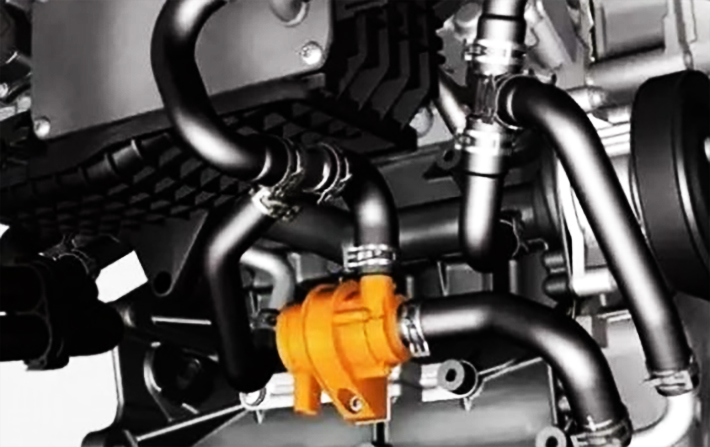Common symptoms and diagnostic methods of engine pump failure.
2025-03-31
The engine water pump is one of the core components of the automobile cooling system, which is responsible for promoting the coolant circulation inside the engine and maintaining the engine operating temperature within a reasonable range. Once the pump fails, it will directly affect the heat dissipation performance of the engine, and may cause the engine to overheat and damage in serious cases. Understanding the common symptoms of pump failure helps the owner to find and solve the problem in time to avoid greater losses.

Coolant leak
Coolant leakage is one of the most intuitive manifestations of pump failure, usually caused by the following conditions:
Aging of pump seals: the pump shaft seal has been working under high temperature and high pressure for a long time, and the rubber material will gradually harden and lose elasticity.
Bearing wear leads to shaft seal failure: When the pump bearing is seriously worn, it will produce axial movement and destroy the seal structure.
Pump housing cracks: common in metal fatigue after long-term use or winter coolant icing expansion.
The leak location usually appears around the small hole (drain hole) at the bottom of the pump, which is specially designed by the manufacturer to discharge the leaking coolant if the pump seal fails, avoiding further damage into the bearing.
Abnormal noise
Faulty pumps are often accompanied by various abnormal sounds, mainly including:
Bearing noise: a continuous "buzzing" or "rustling" sound, which increases with the increase in engine speed.
Impeller scratching sound: Due to the loose bearing, the impeller and the pump shell contact friction, resulting in metal scratching sound.
Belt slip sound: When the pump bearing is stuck, the drive belt may slip and make a sharp noise.
It is worth noting that the slight abnormal noise in the early stage of the bearing is most obvious when the engine is cold started, and the noise may be temporarily weakened after the lubricating oil enters the bearing as the temperature rises, which often leads the owner to ignore the early fault signal.
Engine overheating
When the coolant circulation is poor due to the failure of the water pump, the engine temperature will be abnormal:
Thermometer pointer high: continuously higher than the normal operating temperature (usually about 90°C).
Local overheating: Large engines may have excessive temperature differences between cylinders.
Intermittent overheating: overheating at low speed and normal temperature at high speed may indicate corrosion of the pump impeller.
In particular, modern vehicles are equipped with temperature sensors that are usually located at the engine outlet, and when the pump completely fails, the sensor may not be able to detect the true engine temperature, resulting in miscalculation.
Abnormal heating system
Vehicle heating systems rely on coolant circulation, and pump failures can affect heating:
Heating is not hot or insufficient heat: indicates that the coolant circulation is not smooth.
Heating temperature fluctuation: May reflect partial damage to the impeller of the water pump resulting in unstable flow.
The sound of bubbles in the heating system indicates that there may be leaks or circulation problems in the cooling system.
Other related symptoms
Pump pulley swing: visible radial runout of the pulley usually indicates serious bearing wear.
Abnormal coolant consumption: no external leakage is visible but the level continues to drop, which may leak into the bearing chamber.
Continuous high-speed operation of the electronic fan: compensation for insufficient cooling performance.
Unstable idle speed: Severe overheating may affect the engine control system.
Diagnostic suggestion
When the above symptoms occur, the following diagnostic steps are recommended:
1. Visually check the pump area for coolant crystallization or leakage traces.
2. Check whether there is axial or radial clearance of the pump pulley (should not exceed 0.5mm).
3. Use a stethoscope to identify the location of the noise source.
4. Check the cooling system pressure (normal should be maintained about 1.1-1.4bar).
5. Disassemble and check the impeller condition if necessary (modern plastic impeller is prone to corrosion fracture).
Summary
In terms of preventive maintenance, it is recommended to replace the pump (usually at the same time as the timing belt) according to the manufacturer's requirements, use the specified type of coolant and check the liquid level regularly. Ignoring the failure of the pump can lead to severe overheating of the engine, and repair costs will increase significantly. When early fault symptoms are found, they should be checked and processed by professional maintenance institutions in time.